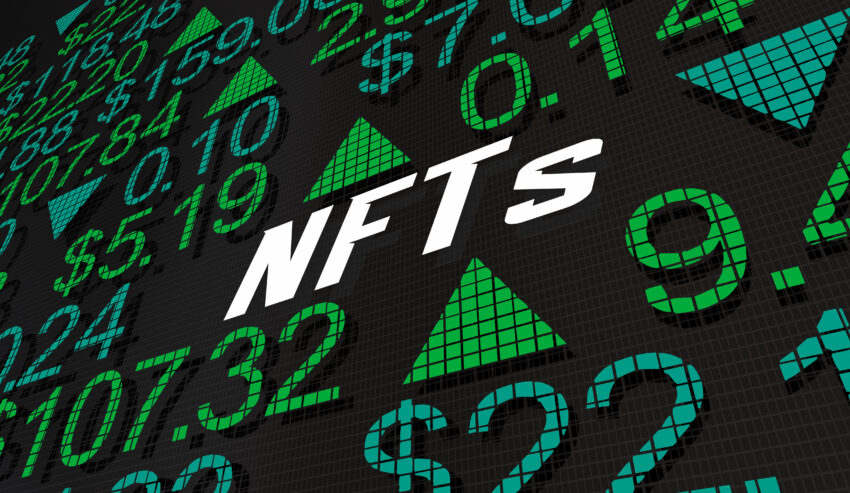NFTs are huge. There are no two ways about it. Thanks to the advent of the blockchain, niche sectors like non-fungible tokens, simply called NFTs, have boomed and are continuing to boom.
Never before have we seen such an influx of creativity and innovation as that provided to us with the blockchain. Some say a digital revolution is upon us the likes of which we haven’t witnessed in our time on this planet (as big as when the internet went public) and digital assets like NFTs have a central role in this transformation. However, like with everything else that is digital, and particularly anything online, there are substantial risks involved. This is especially true if one is not well-versed in the blockchain and cutting-edge realms like NFT spaces.
Because of this, it will be useful to learn how to avoid NFT scams with our tips as there are quite a few of them. Furthermore, before we delve into that, you need to understand what NFTs are in the context of avoiding common scams. It will also help you decide whether you think entering the NFT arena (such as buying, selling, or collecting NFTs) is worth it for you.
What Are NFTs?
It is, in essence, a type of digital art that is distributed and signed digitally. Investors have a wide selection of portfolios to pick from, and it’s a distinctive type of art with numerous advantages. If you’re wondering what it is, here’s a brief explanation.
With the help of the blockchain and cryptocurrency, you may save your most prized pieces of artwork online and then sell them for hundreds of dollars each when you want to. The most common cryptocurrency used to purchase NFTs is Ethereum, however other blockchains (coins and altcoins) are also supported. An NFT’s worth is directly related to the value of the cryptocurrency coin. Artists must also ensure that they let fees be collected from their profits by the NFT marketplace because this currency has such a limited market cap.
In contrast to the actual artwork, an NFT gives the artist the chance to earn royalties if the work is sold, so the price depends a lot on demand. Additionally, the new kind of art is quickly gaining popularity. It has emerged as one of the most popular products on the market in recent months. It is so well-liked for a number of reasons.
This new genre of digital artwork gives designers a way to make money off of their creations. The ease of use and quickness of this method are its key benefits. You won’t have to wait around for payment from clients or for their feedback on your work. And once you start investing, NFT art is a quirky but wise choice.
What Are NFT Scams?
Scams are scams, after all. Blockchain technology is used to trade NFTs and store them in digital currency wallets. As a result, NFT investors are subject to the same online dangers as cryptocurrency users as a whole.
Here are a few examples to help with visualization. Hackers stole NFTs valued at $1.7 million in February after conducting a phishing attempt on the NFT trading platform, OpenSea. Axie Infinity, an NFT game platform with over $4 billion in sales, experienced a breach in March. Ronin, a blockchain service linked to Ethereum for processing transactions in the Axie Infinity ecosystem, suffered a loss of nearly $600 million as a result of the cyberattack. Despite the high level of security provided by the blockchain, users are still at risk for phishing (email scams and fraud) and malware (viruses, trojans, etc.) outbreaks. You run the risk of having your NFT wallet or the NFT platform you use being hacked if you are not careful or if you choose a bad wallet, too!
NFT scams come in the form of “rug pulls”, fake marketplaces, cybercriminal fraudsters, “pump and dump” schemes and more. NFT risks also include other security risks such as malicious software infections, social engineering attacks, or the possibility of downloading a fake NFT artwork altogether!
Unfortunately, such is the world of NFTs on the blockchain, Wherever there are huge profit gains in little time, there is bound to be something fishy going on. To approach this with utmost care, read the next section.
How to Avoid NFT Scams
With NFTs, you must be careful, so you want to make sure you think about the following;
- Set up your cryptocurrency wallet with a reputable and legitimate provider
- Enable all possible security measures on your wallet
- Research NFT investments in depth across communities and forums
- Protect your devices with cybersecurity software such as antimalware programs and VPN apps
- Never give your seed phrases or passwords to anyone you do not explicitly know and trust
Overturning every stone may be tedious but is necessary when examining an NFT or blockchain project for warning signs and spotting NFT scams. Investigating a project and the people behind it could wind up sparing you from being “pulled under the rug.” This does not imply that fire always exists in areas where there is smoke. However, something is probably genuine if it looks strange or too good to be true. Remember, there are no guarantees in the blockchain world, so you are fully responsible. The truth is that there is still little regulation of digital commodities like NFTs and cryptocurrency. It is still quite new. When things go wrong, getting help might be challenging or even impossible. We could all use a little more skepticism before beginning a new project. In the long run, it might end up saving you from a great deal of pain.
Of course, this is not to say you should not venture into the NFT realm, because many have had great success from it and enjoyed it thoroughly. Keep yourself secure, follow the tips above and stay updated on the latest developments and news on NFTs!


